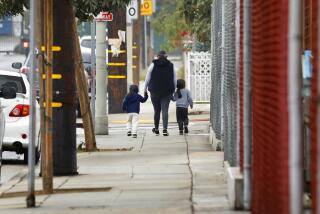Our Kids Are Not Doomed
For the last 30 years, rising rates of youth violence, substance abuse and suicide have been blamed on two social pathologies: divorce and unwed motherhood. We have been told that unless we can reverse the tide of family dysfunction, these trends will engulf us.
In 1998, a British economist claimed that the collapse of shotgun marriages was leading inexorably to a modern social disaster on the same order as the Irish potato famine of 1846-49.
And last year, after Massachusetts and much of Canada legalized same-sex marriage, Focus on the Family leader James Dobson warned that unless we act now to restore traditional marriage, Western civilization itself might crumble.
Tying such dire predictions of social decay to divorce and single motherhood seemed credible in the 1970s and 1980s. But a funny thing happened in the 1990s: Almost every negative social trend tracked by the census, the Centers for Disease Control and the Department of Justice declined.
Teen birthrates fell by 30% between 1991 and 2002. The number of violent crimes in schools was halved between 1992 and 2002. Teen homicide rates dropped to their lowest level since 1966. Teen suicides decreased by 25%, and drug abuse, binge drinking and smoking all fell.
Yet the number of couples living together unmarried increased by more than 70% over the decade; the population at large increased by only 13% during this period. Gay and lesbian parenting became more common. The number of families headed by single mothers rose five times faster than the number of married-couple families.
Obviously, attributing the improvements of the 1990s to the continued increases in families headed by single moms is as absurd as blaming all the social ills of the 1980s on divorce.
Single parenthood does increase the risk that teens will get into trouble. But so do poverty, parental conflict, frequent school relocation, parental substance abuse and even an emotionally distant relationship with married parents.
Studies show that the majority of teens who exhibit serious behavior problems have five or more separate risk factors in their lives.
The 1980s were exceptionally traumatic times. The massive entry of women into the workforce during the 1970s, followed by a surge in divorce, overthrew old family norms and gender roles before new social values had developed.
Meanwhile, real wages fell for male workers, job insecurity rose and poverty rates increased dramatically. Politicians shredded the social safety net. The purchasing power of a welfare check decreased by 42%. Stable families became harder to sustain.
Some of the improvement in the 1990s was because of a better economic climate. But some was a result of individuals learning better ways to handle changes in their lives. Men increased their share of housework and child care.
Parents in dual-earner families increased the time they spent with their children, even though they also worked longer hours. In 1997, kids in two-parent families spent about six hours a week more with their mothers and four hours more with their fathers than in 1981, according to a University of Michigan study.
People began to handle divorce better. More divorced dads paid child support. More couples settled their divorces amicably and worked out joint custody agreements. More unwed fathers remained involved with their children.
If only our pundits and policymakers could do as good a job of catching up with reality and adjusting to social change as ordinary Americans are doing.
Of course, there is much left to work on. But it doesn’t help today’s diverse families to be told their children are doomed unless they can shoehorn themselves into a traditional marriage.
Divorced and unwed parents need constructive advice on effective parenting, along with job training and education to increase their economic security. Their children need high-quality child care, which has been shown to help children overcome risks in their family or community settings.
It’s time to stop predicting social catastrophe from the transformation of family life and start helping every family build on its distinctive strengths and minimize its weaknesses. Refusing to recognize the real progress that has been made serves no one.






